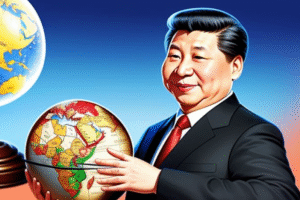$COTTON $USOIL #CottonFutures #CommodityTrading #AgricultureInvesting #MarketTrends #EconomicInsights #InvestmentStrategy
Why Did Cotton Prices Surge on Friday? Discover the Key Factors!
In today’s cotton news, futures contracts exhibited notable gains as traders headed into the weekend. The market saw contracts largely steady, with some even climbing up to 12 points higher. Specifically, December contracts surged 11 points this week, signaling a robust performance in the cotton sector.
A significant factor influencing these price movements is the recent fluctuations in the US dollar index. On Friday, the index fell by $0.370, closing at $97.845. This decline typically bolsters commodity prices, as a weaker dollar makes exports cheaper for foreign buyers, thereby increasing demand.
Additionally, crude oil futures also experienced a slight uptick, rising by 22 cents. The interconnectivity between energy prices and agricultural commodities is noteworthy; higher oil prices can increase production costs, which often translates to higher prices for end consumers. Consequently, the market is closely monitoring these dynamics to gauge their impact on cotton prices.
Market Sentiment and Commitment of Traders Data
As we analyze the current cotton market, the Commitment of Traders data provides critical insights. This data indicates the positions held by various market participants, including commercial hedgers and speculators. The current positioning suggests a bullish sentiment among traders, which may further support rising prices in the near term.
Moreover, market analysts are increasingly optimistic about cotton demand due to favorable weather conditions in key growing regions. This optimism is reflected in the latest reports that highlight potential yield increases this season, further contributing to the upward momentum in prices.
Global Economic Factors at Play
Global economic conditions also play a crucial role in shaping the cotton market landscape. For instance, ongoing geopolitical tensions and supply chain disruptions can lead to increased volatility. Investors are advised to keep a close watch on these geopolitical developments, as they can have immediate ramifications on commodity prices.
Furthermore, as we approach the end of the fiscal year, many investors are re-evaluating their portfolios. Shifts in investment strategies could lead to increased buying activity in cotton futures, particularly as agricultural commodities become more appealing amid inflationary pressures.
Conclusion: What Lies Ahead for Cotton Futures?
Looking ahead, the cotton market appears poised for continued strength, driven by a combination of favorable demand dynamics and a supportive economic backdrop. Traders and investors should remain vigilant, keeping abreast of both domestic and global factors that could impact cotton prices.
For those interested in diversifying their investments, exploring other commodities or asset classes is advisable. Check out more on stock market trends here.
In summary, Friday’s surge in cotton prices can be attributed to a convergence of factors, including a weaker dollar, rising crude oil prices, and positive market sentiment. As always, staying informed will be key to navigating the complexities of commodity trading in the coming weeks.











Comments are closed.